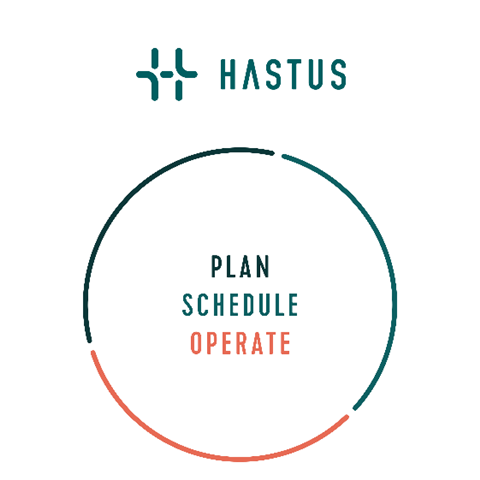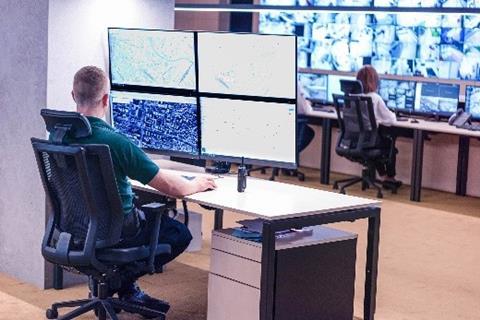How integrated planning, resource management, and optimisation technologies open a new chapter for rail
An industry in evolution

Passenger rail is still feeling the aftershocks of almost three years of uncertainty and major disruption. The industry is gradually recovering in many countries, but we still do not know entirely what the lasting effects will be.
What we do know, however, is that the pandemic is merely the most recent round of seismic transformations. Decarbonisation. Urban sprawl. Multi-modal travel. If rail seeks to build a firm foundation on this ever-shifting landscape, it needs to engage in a significant transformation.
In most parts of Europe, governments consider passenger rail to be the backbone of mobility. We’re seeing significant investments to maintain and extend existing networks. Operators are being supported in times of crisis. New lines are being built. Some governance models are also being completely revamped to address the increasingly complex task of service planning and delivery. France has opened up its rail markets to competition. And the UK is creating a new rail governance body – Great British Railways.
It’s all about the passenger experience, in a heavily constrained environment
Rail has always been highly segmented. For operators, improving collaboration and communication between planning, maintenance, and operations teams is a constant struggle.
This is problematic, because service quality and robustness depend on a set of critical plans and resources. All it takes is one weak link in the production chain to negatively impact passenger service. Strengthening integration among stakeholders limits fragmentation, increases efficiency, and improves the quality of passenger service.
GIRO advocates a holistic management of transport services and resources. GIRO’s HASTUS software, used by over 300 public transport and passenger rail authorities and operators worldwide, provides a flexible and robust software environment that fully integrates all aspects of planning, optimisation, and operations.
Teams have a 360° view of capacity, schedules, rolling stock, maintenance activities, on-board personnel, and ground staff – making it easier for each team to plan and manage the resources under its responsibility while minimising potential impacts on others. A schedule change will alert the scheduler to any impacts on existing rolling stock and staff assignments.
This tight integration brings robustness and flexibility to the entire rail production chain and allows for more frequent changes with minimal impact. Greater integration also creates visible benefits between authorities and operators.

In a rail network shared by several operators – as is often the case in Europe for regional services – securing track access is critical. It’s also a time-consuming and error-prone process that must follow strict regulatory and safety guidelines.
The HASTUS path-management environment integrates with other related resources to address all of these constraints at once. Operators and infrastructure managers can exchange timetables and path requests in a dynamic and automated manner with complete and continuous integration. Essentially, no train is without a path, 365 days a year.
Operators can quickly adapt to path changes jointly with other stakeholders by adjusting timetables, rolling stock plans, and workforce shifts. This results in fewer late and overcrowded trains, and better usage of resources. Passenger experience is also improved, since customer information is published earlier and more accurately.
Bringing flexibility and resilience into the mix
Travel-pattern volatility was already trending upward even before the COVID-19 pandemic. Authorities and operators now face immense pressure to adapt schedules and capacity to keep pace. The era of twice-yearly schedule changes may soon be over. That said, overcapacity creates unnecessary costs. An innovative way to reconcile the two is through dynamic planning and integrated resource management.
Yet another challenge? Ageing assets and network investments, which significantly increase the number, duration and impacts of maintenance programs – making it all the harder for planning and operations teams to keep service quality and costs under control. Informing travellers of frequent service changes is no easy feat, either.
Operators can use the optimisation algorithms in HASTUS to more easily adapt resources to minimise the impacts of fluctuating demand and service disruptions – from making rolling-stock and staffing adjustments to managing unexpected work extensions and more.

Optimising the use of mission-critical resources
Expertise runs deep in rail – typically, the result of skilled professionals with years of experience. Planning and operations specialists routinely develop complex plans, often with limited resources and time. But as issues and constraints become more complex – take labour shortages, for example – this task becomes increasingly challenging.
Optimisation technologies support such expertise by providing unprecedented capabilities for planning, adjusting services, and making the best of scarce resources.
Rail operators increasingly rely on AI-powered software solutions like HASTUS to address the intricacies of rail planning and operations management. Such capabilities open the door to a more dynamic railway – from the timetabling phase to the day of operations on mission-critical resources such as track access, rolling stock, on-board crew, and station staff.
Operators can more easily build transport and resource plans to keep up with shifting business needs and passenger demand, all while taking into account operational constraints, available resources, and current regulations. They can also easily create multiple scenarios and modify optimisation criteria as needs change.
In other words, they now have the dynamic and robust flexibility that had been sorely lacking.

Turning crisis into opportunity
The current challenges have created an unprecedented opportunity for passenger rail. By improving efficiency, responsiveness, and resilience, operators can create more dynamic and robust networks that are better adapted to the needs of travellers.
Reforming any industry is always a challenge. Even more so in the complex world of passenger rail, which involves many stakeholders and where the whole is only as strong as its weakest link.
Nonetheless, innovation in resource management and optimisation technologies can help make rail greener, more attractive and more efficient. Proven modern-day solutions are available for authorities and operators willing to embrace a transformation mindset.

ABOUT THE AUTHOR
As HASTUS Product Manager for Rail at GIRO, Jean-Marc uses his 15 years of IT and product management experience to build multidisciplinary teams to develop software that meets the specific challenges of clients.
ABOUT GIRO
GIRO develops and implements powerful software solutions for planning and operating passenger rail. For over 40 years, operators have relied on our HASTUS software solution to optimise the management of their rolling stock and workforce by integrating the planning, scheduling and daily operations of mission-critical activities. More than 300 public transport operators, including more than 100 railways worldwide use HASTUS to deliver a more robust and adaptable service.

















